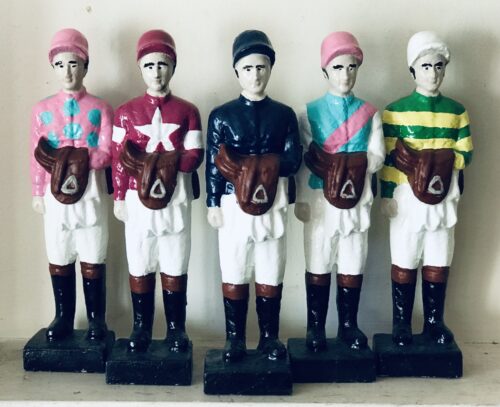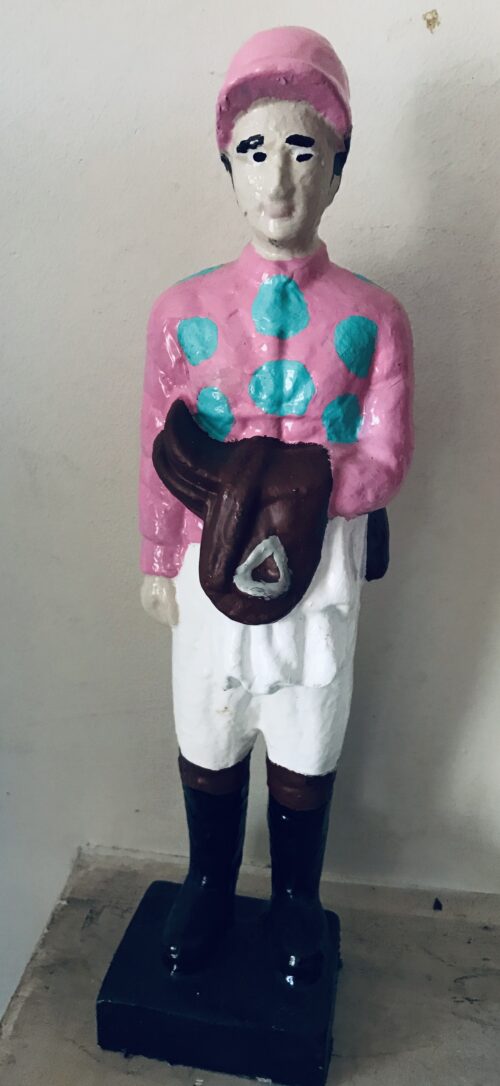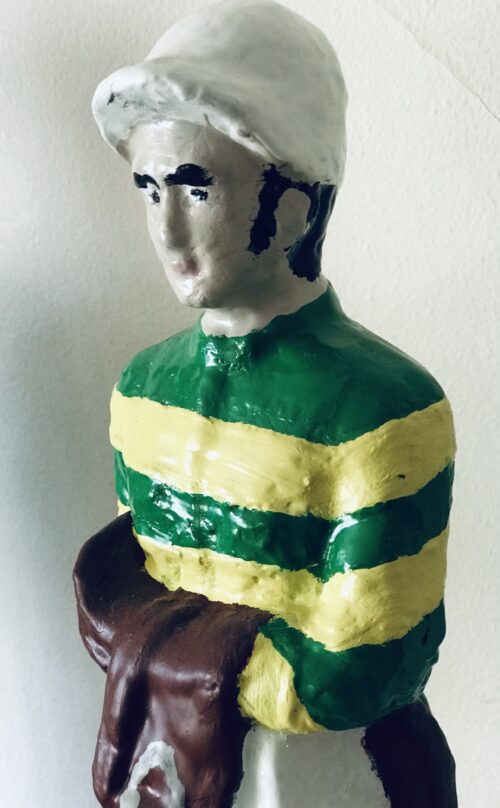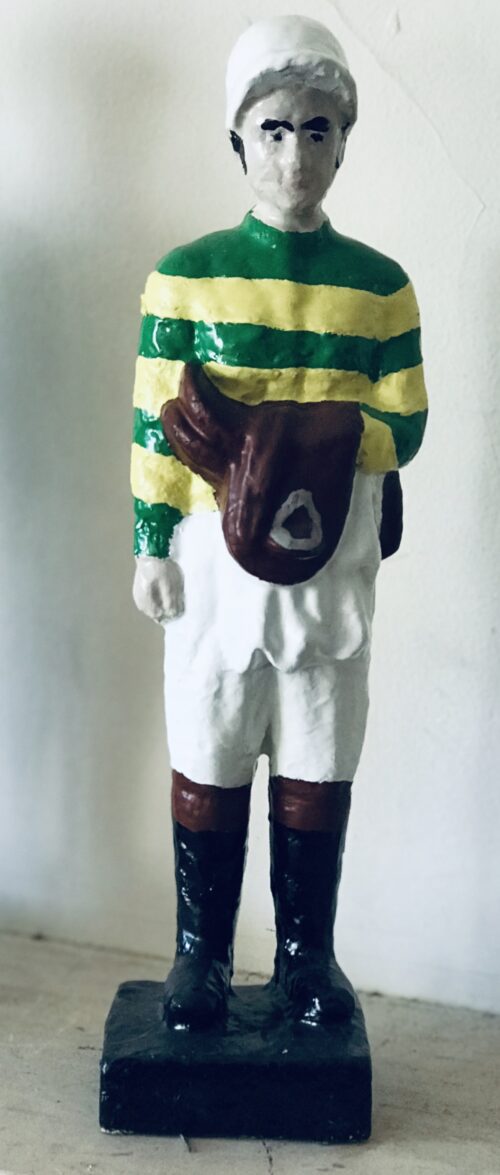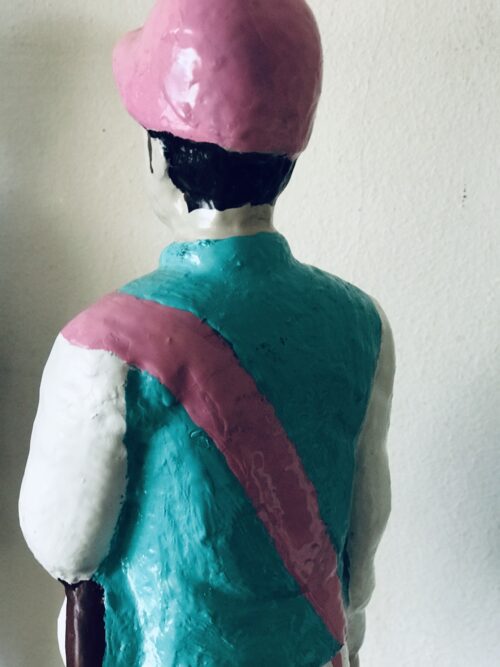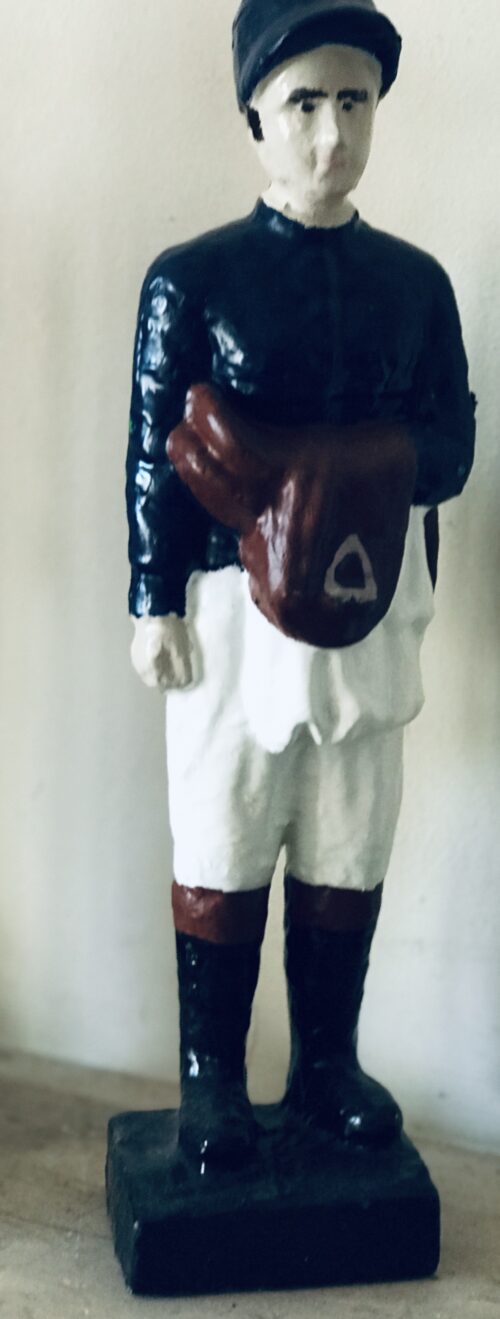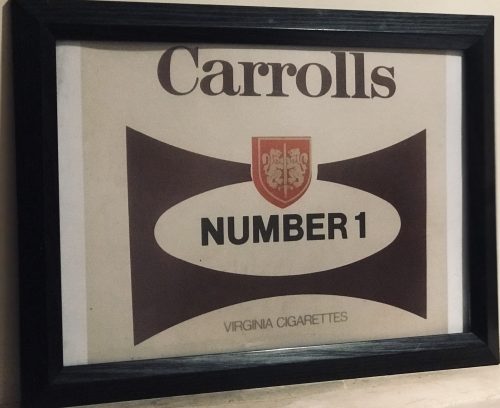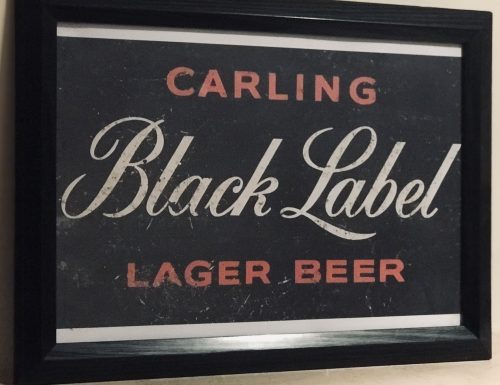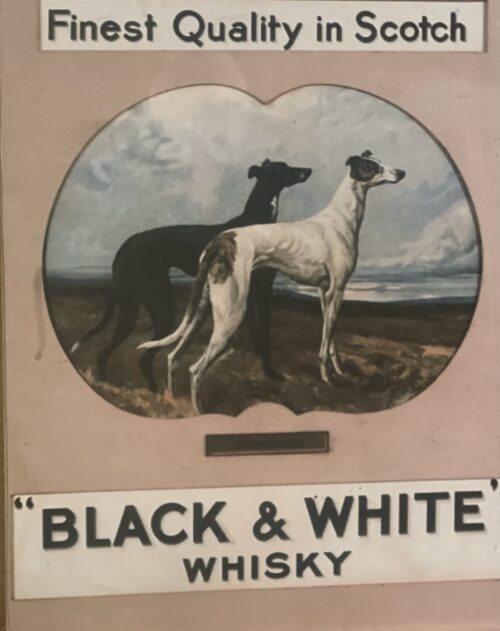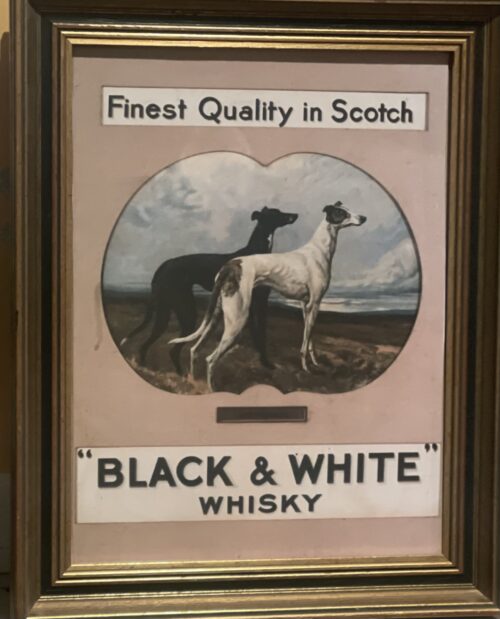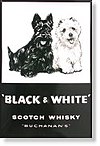Carling Black Label Beer Retro advert fashioned from the blood, sweat,tears and spillage of a well used Irish Bar Tray & enamel advertising signs.Using high quality reprographics we have brought every scratch,dent and mark back to life in the shape of this unique series of prints.
Dimensions :35cm x 48cm Glazed
Even though Carling originated in Canada,it’s popularity spread widely throughout the Commonwealth including Ireland .A famous advertising campaign “I bet he drinks Carling” contributed hugely to the brands market share .
Carling Black Label is a
Canadian brand of
lagerdistributed by
Carling Brewing Company. In several countries, it is also known as Carling Black Label, and in Sweden, it is known as Carling Premier. In the
United Kingdom it is now known as just Carling.
History
Although its original focus was on
ale, Carling has been brewing lager-style beers since the 1870s. In 1927, as part of an overall corporate re-branding effort under new president J. Innes Carling, the company renamed its already popular Black & White Lager to Black Label.
Three years later, Carling was purchased by
Toronto business tycoon
E. P. Taylor, who merged the company into his
Canadian Breweries Limited (CBL), which grew to be the world's largest brewing company, at least for a time. Under Taylor, Black Label was promoted as CBL's
flagship brand and went on to become the world's first beer to be brewed on a mass international scale,
becoming particularly popular in Commonwealth countries such as the United Kingdom, Australia, New Zealand and South Africa.
Canada
In response to a shift in popular taste away from ale, Carling added a three-storey lager plant to their main
London, Ontario, brewery in 1877.
Carling's Lager (later renamed Carling's Bavarian Stock Lager, and then Carling's Imperial Club Lager) was the company's first lager brand. Carling's Black & White Lager was introduced in the 1920s and later renamed Black Label Lager, in contrast to their recently launched Red Cap Ale.
Due to its strength and price, the brand quickly became popular with the country's working class, perhaps most famously among the
loggers and
miners of
Northern Ontario, where the brand gained a tough,
blue-collar image.
Around 1990, Black Label had an advertising campaign in Canada, which used the phrase "The Legend is Black."
United States

Brewing Corporation of America of Cleveland, Ohio in 1965. Home of Carling Black Label lager and Carling Red Cap Ale and former site the Peerless Motor Car Company
After the repeal of
prohibition in 1933, the
Peerless Motor Car Company, looking for a way to diversify in the poor car market of the
depression, purchased the American rights to Carling's formulas, identifying labels, and
trademarks. Technicians and
brewmasters were sent from Canada to convert a Peerless plant in
Cleveland,
Ohio, into the Brewing Corporation of America. They first tried just brewing Carling's Red Cap Ale, but sales were too slow to maintain the brewery, and sales didn't climb until the introduction of Black Label lager. The philosophy behind Black Label was to have a high quality lager that was available nationwide but with a locally brewed budget price. The strategy worked, and the next several decades led to rapid growth and expansion for the brewery and the Carling Black Label brand.
When Carling stopped producing Black Label to focus on a more profitable lager, they found their sales plummeting. Carling re-introduced Black Label with a beautiful blonde named Mabel, portrayed by Jeanne Goodspeed, with the slogan "Hey Mabel, Black Label!". The twenty-year marketing campaign cemented the name in the popular culture of America.
In 1979, after several years of intense pressure from the larger American Brewers
Miller and
Anheuser-Busch, Carling-National was bought out by the
Heileman Brewing Co. of
La Crosse, Wisconsin. Carling and the Black Label brand are currently owned by the
Molson Coors Brewing Company. Though no longer widely distributed in the U.S., Black Label remains the official beer of Beer Frisbee.
United Kingdom
Black Label was introduced to the United Kingdom in 1952. Originally, it was only available in bottles, but in 1965, The Hill Top in
Sheffield became the first pub to pour Carling Black Label draughts.
In the 1970s and 80s, Carling Black Label sales were driven to great heights, due partly to increased advertising support, in particular the classic "I bet he drinks" series of advertisements, and partly with the launch of Carling Black Label in cans. Cans were important to Carling's success as they helped open up the "take home" market.
[3]
The "I bet he drinks" series of ads showed someone doing something cool, clever or difficult, and having a bystander say "I bet he drinks Carling Black Label". With the help of this advertising campaign, it became Britain's best-selling brand of beer in 1971. In the 1980s, many of the adverts featured comedians
Mark Arden and
Stephen Frost, also known as
The Oblivion Boys, delivering the classic punchline. One of the advertisements in the series,
Dambusters from 1989, was a parody of the
1955 film of the same name, and was ranked at number 12 on
ITV's list of the "Best Ever Ads" in 2005,
and at number 17 on
Channel 4's list of the "
100 Greatest TV Ads" in 2000.
Campaign Live also ranked it at number 5 in their list of the "Top 10 Funniest TV Ads of All Time" in 2008.
Carling has remained Britain's best selling beer since 1985. 'Black Label' has been dropped from the brand name and logo in Britain since 1997.
South Africa
In South Africa, Black Label began to take on a different tone with the anti-
apartheid movement. This was partly due to the fact that, at 5.5%, it had more
alcohol than the other brands of beer that generally had 5.0%, as noted in the popular advertising catch phrase "only hard working students deserve an extra 0.5 percent."
Furthermore, the connotation of black to the racial issue became a point of pride to the native Africans. It used to be sold with the motto, "America's Lusty, Lively Beer", perhaps in reference to Canada, though it is seldom seen in the United States. The motto came from an older advertising campaign in the United States. Another famous
Afrikaans slogan for Black Label in South Africa is, "
Black Label sê die bybel", which means "The Bible says (one should drink) Black Label."
 Coursing operates in a highly regulated environment coupled with comprehensive rules directly applied by the ICC. It operates under a licence from the Minister of Arts, Heritage & the Gaeltacht, issued annually with a total of 22 conditions attached. Although our sport may take place only over the winter months and is sensitive to the hare breeding season, the protection and policing of preserves is a continuous activity and conducted on a voluntary basis. Quercus, the Belfast University research body reports that “Irish hares are 18 times more abundant in areas managed by the Irish Coursing Club than at similar sites in the wider countryside”.
Without regulated coursing there would be an increase of unregulated illegal hunting taking place throughout the year, with no organisation taking responsibility or interest in the overall well-being of the hare. If coursing clubs ceased to perform their functions, the hare population here would decline at a rapid rate as the proliferation of illegal hunting could easily rise to epidemic proportions as seen in the UK, where poaching and hare population decline are the order of the day.
Finally, I offer a quote I recently found that seems appropriate: “The future of coursing is so dependent on hare preservation that no effort should be spared by us to put it on an assured basis.”That was from an October 1924 edition of the Irish Coursing Calendar, now known as the Sporting Press newspaper.
The Irish Coursing Club has been, and will continue to be, deeply immersed in the conservation of the Irish Hare population, always seeking new ways to improve conservation in the face of loss of habitat due to the “advances” of our modern world and in spite of grossly uninformed efforts to ban it when no proven alternative conservation programmes are in place.
Coursing operates in a highly regulated environment coupled with comprehensive rules directly applied by the ICC. It operates under a licence from the Minister of Arts, Heritage & the Gaeltacht, issued annually with a total of 22 conditions attached. Although our sport may take place only over the winter months and is sensitive to the hare breeding season, the protection and policing of preserves is a continuous activity and conducted on a voluntary basis. Quercus, the Belfast University research body reports that “Irish hares are 18 times more abundant in areas managed by the Irish Coursing Club than at similar sites in the wider countryside”.
Without regulated coursing there would be an increase of unregulated illegal hunting taking place throughout the year, with no organisation taking responsibility or interest in the overall well-being of the hare. If coursing clubs ceased to perform their functions, the hare population here would decline at a rapid rate as the proliferation of illegal hunting could easily rise to epidemic proportions as seen in the UK, where poaching and hare population decline are the order of the day.
Finally, I offer a quote I recently found that seems appropriate: “The future of coursing is so dependent on hare preservation that no effort should be spared by us to put it on an assured basis.”That was from an October 1924 edition of the Irish Coursing Calendar, now known as the Sporting Press newspaper.
The Irish Coursing Club has been, and will continue to be, deeply immersed in the conservation of the Irish Hare population, always seeking new ways to improve conservation in the face of loss of habitat due to the “advances” of our modern world and in spite of grossly uninformed efforts to ban it when no proven alternative conservation programmes are in place.


